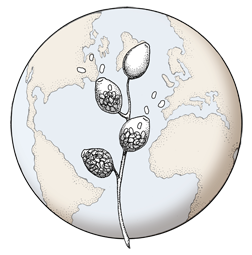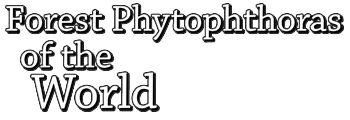Pathogenicity of Swedish isolates of Phytophthora quercina to Quercus robur in two different soils
Publication Type:
Journal Article
Source:
New Phytologist, Volume 158, Issue 2, p.355 - 364 (2003)
Abstract:
-
Several studies have demonstrated the involvement of soil-borne Phytophthora species, especially Phytophthora quercina, in European oak decline. However, knowledge about the pathogenicity of P. quercina in natural forest soils is limited.
-
The short-term effects of two south-Swedish isolates of P. quercina on root vitality of Quercus robur seedlings grown in two different soils, one high pH, nutrient-rich peat–sand mixture and one acid, nitrogen-rich but otherwise nutrient-poor forest soil are described. Pathogenicity of P. quercina was tested using a soil infestation method under a restricted mesic water regime without prolonged flooding of the seedlings.
-
There was a significant difference in dead fine-root length between control seedlings and seedlings grown in soil infested with P. quercina. Trends were similar for both soil types and isolates, but there was a higher percentage of fine-root die-back and more severe damage on coarse roots in the acid forest soil. No effects on above-ground growth or leaf nutrient concentration between control seedlings and infected seedlings were found.
-
The results confirm the pathogenicity of south-Swedish isolates of P. quercina in acid forest soils under restricted water availability. Stress-induced susceptibility of the seedlings and/or increased aggressiveness of the pathogen in the forest soil are discussed as key factors to explain the difference in root die-back between soil types.


